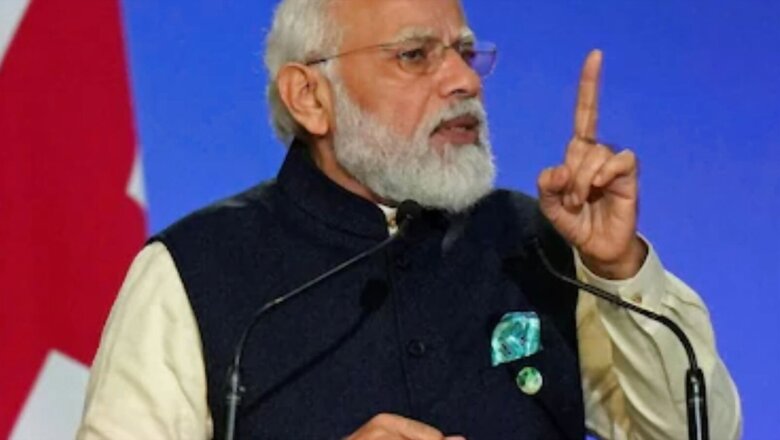
views
Experts have welcomed India’s updated Nationally Determined Contribution (NDC), saying the fact that the country enhanced its climate ambitions in the post-pandemic scenario needs to be emphasised and appreciated. The Union Cabinet on Wednesday approved India’s updated Nationally Determined Contribution (NDC) under the Paris Agreement, incorporating Prime Minister Narendra Modi’s ‘Panchamrit’ strategy announced at the Glasgow conference into enhanced climate targets.
According to the updated NDC, India now stands committed to reducing emissions intensity of its GDP by 45 per cent by 2030, from 2005 level, and achieving about 50 per cent cumulative electric power installed capacity from non-fossil fuel-based energy resources by 2030. To further a healthy and sustainable lifestyle, ‘LIFE’ ‘Lifestyle for Environment’ as a key to combating climate change” has been added to India’s NDC.
“The decision by India to update its NDCs is in line with the prime minister’s Glasgow announcements. It enhances the ambition and yet puts sustainable development at the centre of the debate,” said RR Rashmi, distinguished fellow at The Energy and Resources Institute. It is clear that India does not envisage sectoral emission reduction obligations as part of its NDC at least till 2030. The NDC does not bind it to any sector-specific mitigation obligation or action. And, it rightly emphasises the value of a sustainable way of living as an effective and just solution to the problem of climate change, she said.
Dr Vaibhav Chaturvedi, fellow, Council on Energy, Environment and Water, said the share of non-fossil sources in India’s power generation capacity has already crossed 41 per cent on the back of dedicated policies, and emissions intensity GDP declined by 24 per cent between 2005 and 2016. “That India’s ambition has been enhanced in the post-pandemic scenario needs to be emphasised and appreciated. The Union Cabinet’s statement explicitly states that the enhanced NDC is a step towards the net-zero goal, the government should now follow this with explicit inclusion of the 2070 net-zero pledge in its yet to be submitted long-term strategy to the UN,” he said.
Madhura Joshi, senior associate at India Energy Transition Lead, E3G, said: “India’s updated NDC targets are a welcome move. These targets, while lower than the ‘Panchamrit’, are actionable.” Vibhuti Garg, energy economist and India lead at the Institute for Energy Economics and Financial Analysis, said India’s updated NDC does not include all the ‘Panchamrit’ promises made at COP26 in Glasgow. The revised NDC does not include 500 GW of non-fossil fuel-based capacity by 2030 and a reduction of one billion tonnes of carbon emissions by 2030. The current renewable energy target stands at 175 GW by 2030, she said.
In order to achieve 2070 net-zero goals, India needs actionable short-term targets till 2030 that can help the country to achieve its long-term goal, Garg added. At the 26th session of the Conference of the Parties (COP26) of the UN Framework Convention on Climate Change (UNFCCC) last November, Modi had announced that India’s non-fossil energy capacity will reach 500 gigawatt by 2030.
He had said India will fulfil 50 per cent of its energy requirements from renewable energy sources by 2030 and reduce its total projected carbon emissions by 1 billion tonnes by that year. India will reduce the carbon intensity of its economy by 45 per cent, over 2005 levels and achieve the target of net zero emissions by 2070, Modi had said.
The five-point agenda is called ‘Panchamrit’ (five nectar elements). “The updated NDC includes 50 percent electric power installed capacity from non-fossil fuel-based energy resources by 2030 which is going to take care of the 500 gigawatt non-fossil energy capacity target. Similarly, the decision to increase emission intensity reduction target by another 10 per cent (from 35 per cent earlier to 45 per cent now) is going to cut down CO2 emissions by 1 billion ton by 2030,” a senior official from the Union environment ministry told .
.
Read all the Latest News and Breaking News here













Comments
0 comment